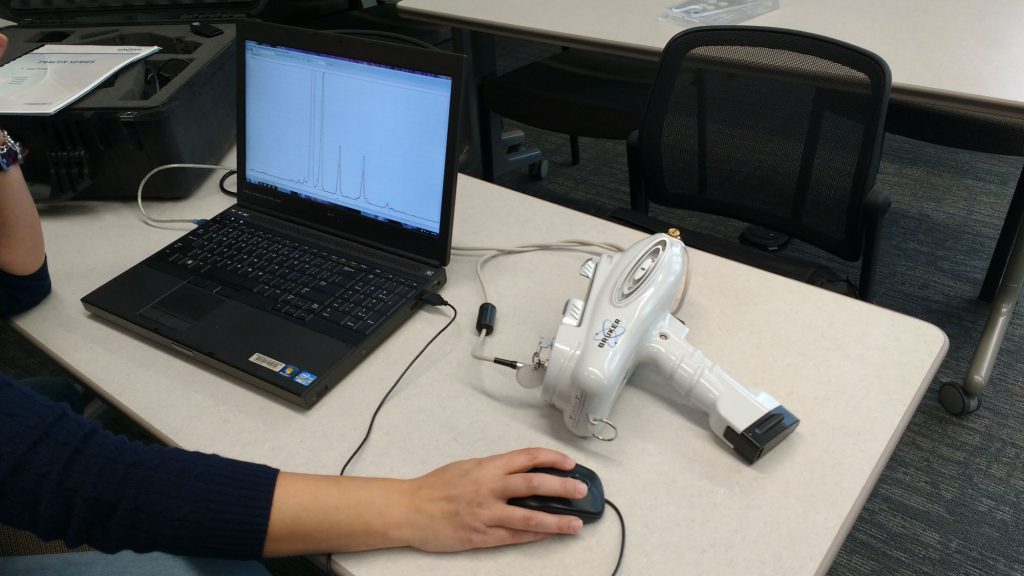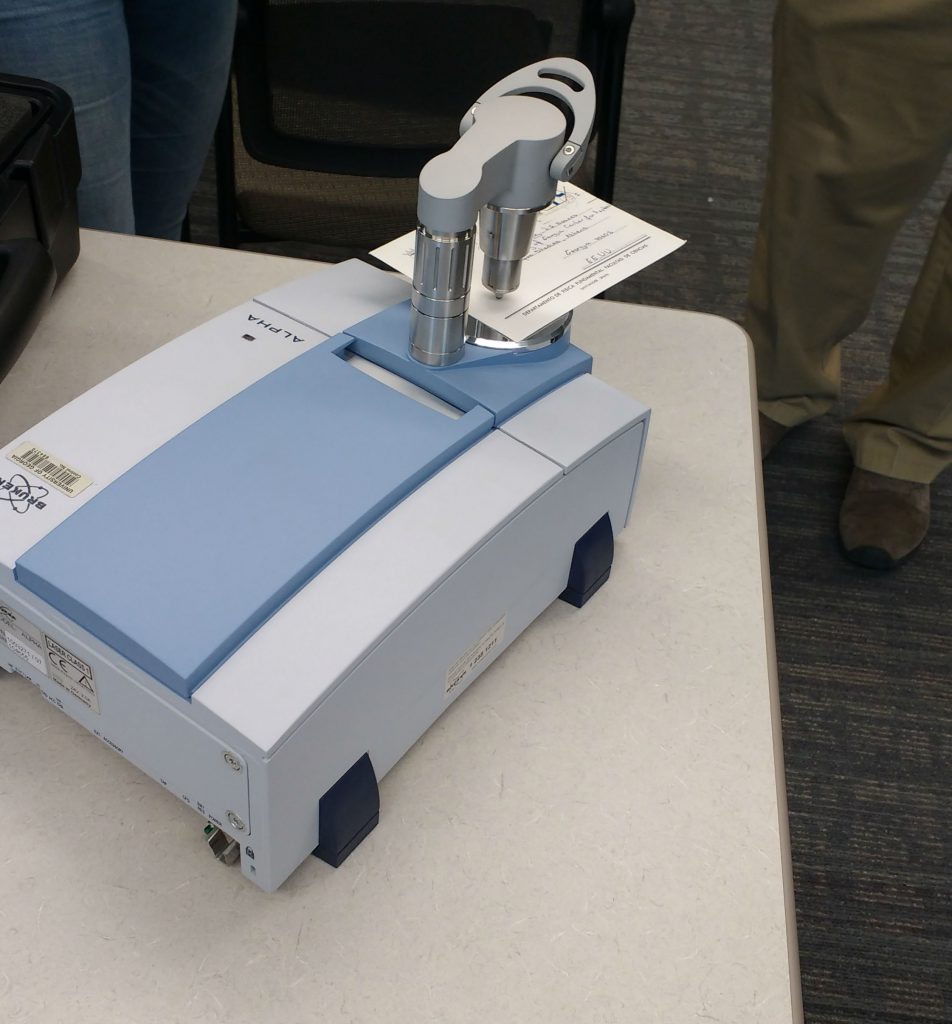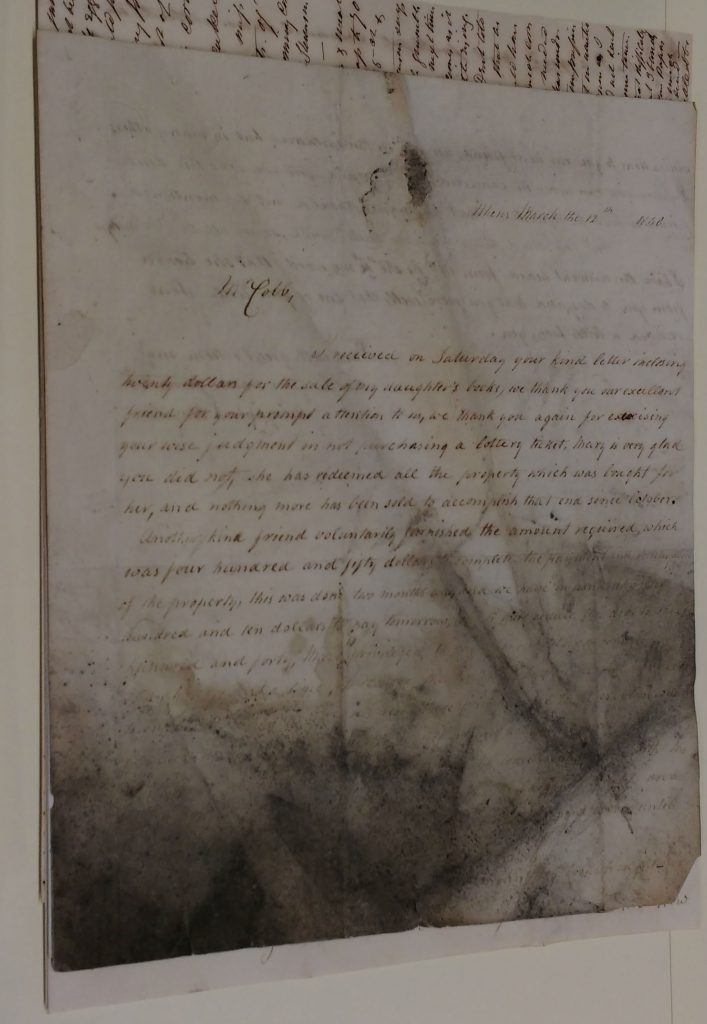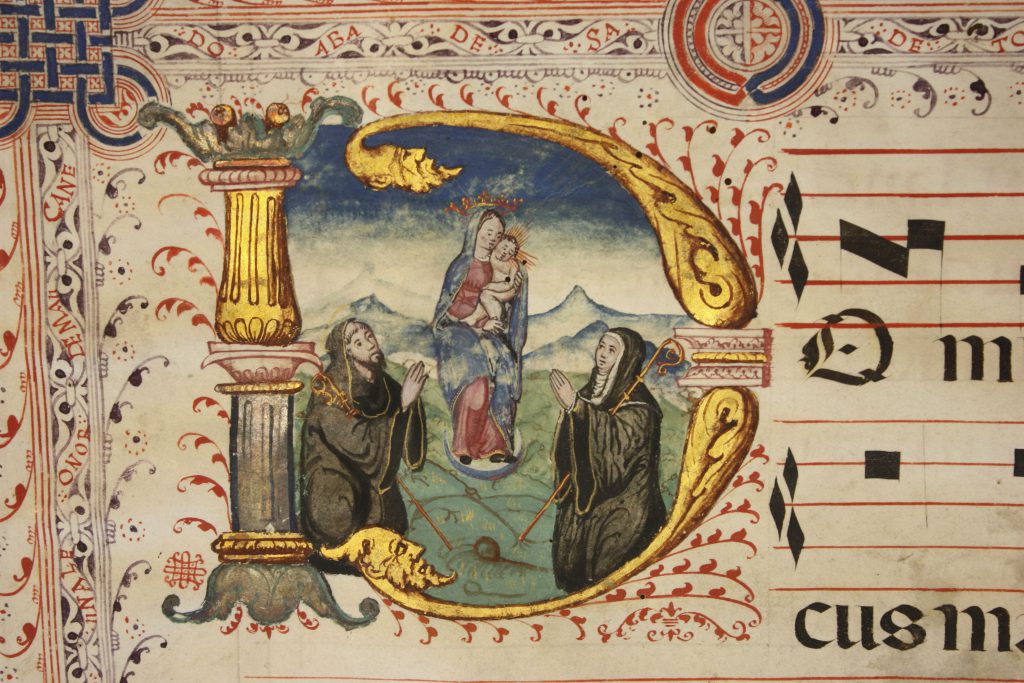The semester is wrapping up – we’re in the last week of classes here at UGA – so it’s time to reflect on where we’ve been and look at head to where this series of courses will be going. If you haven’t already read the students’ interim reports on the Hargrett Hours, do that first; they’ve made some amazing discoveries about our Book of Hours in just a few weeks of research.
Today, however, I’m looking forward, to next fall and a new spin I’ll be putting on my manuscripts courses.
I bet you, dear reader, didn’t know that UGA’s Center for Applied Isotope Studies is the largest and oldest such facility in the nation. Nor did you know (I suspect) that they have a mobile STEM lab designed to be brought into humanities and social science classrooms across the UGA campus. This program, known as STEM on the MOVE, gives non-STEM professors access to the technologies and analytic software — plus knowledgeable personnel to run the instruments and interpret the results — to incorporate materials analysis into our course design. What kind of paper is that book printed on? What are the chemical components of that pigment? What pollutants are in that soil sample? What alloys are in that Civil War sword? Can we recover the faded or erased words in that old letter? These are the kinds of questions that STEM on the MOVE technology can help answer — answers that are sometimes sufficient in themselves, but more often will lead to new, more precise, and more nuanced questions that we humanities scholars can then pursue.
I’ve now met twice with Alice Hunt, the wonderful woman who runs STEM on the MOVE, and the Special Collections librarians about the possibility of using these technologies in my manuscripts courses, and we’re all super excited about theprojects we’ll be able to do.
There are three devices we can access, each of which performs a different function. Having no science background, I’m starting from scratch on understanding how the technology works and what it can be used for – let me try to translate what I’ve learned.
The first is X-Ray Fluorescence (XRF). It looks a bit like a ray gun (which it is — it emits gamma rays), and it exposes the elements present in a sample. The XRF excites the electrons within the sample’s atoms, and then reads the energy released by that excitation, presenting that information (the spectra) in the form of a graph that (once you know what you’re looking for) you can use to identify the elements present in the sample.

What’s it good for? This instrument is great for identifying non-organic materials in a sample. Is that ink made out of iron gall? Does that blue pigment contain cobalt? What metals are really present in that gold leaf? These are the kinds of questions the XRF can help answer, questions that then open another door into the methods used by the medieval scribes and artists who produced the manuscript.
The second device is the Fourier Transform Infrared Spectrometer (FT-IR). It’s primarily designed for quality control in manufacturing contexts (i.e., making sure the compounds are what they’re supposed to be), but it can also be used for identifying inorganic substances in a sample. Place the sample under the crystal “needle” (my term, as the device reminds me of a turntable), and the FT-IR will take a reading (also a spectra) and try to match it to a similar data set in its database.

So: is this paper sample rag or pulp? If pulp, what kind of tree? If that pigment doesn’t contain cobalt, is it an indigo instead? If that ink isn’t iron gall, is it carbon black? This is a second-tier instrument, to be used primarily when the XRF comes up blank.
Finally — and this is the instrument the librarians are most excited about — we’ll have access to infrared imaging. This photographic technology is ideal for revealing text that has faded over time, been damaged by environmental factors (like water damage), or has been purposefully erased (palimpsesting). It will also reveal the underdrawing beneath miniatures. The faded inks will fluoresce under the infrared light, so you can capture an image that is more legible than the original. We’ve got a faded seventeenth-century inscription in the Hargrett Hours that should become (more) legible with this technology, and we can also expose the palimpsested sections of the Spanish Gradual. The librarians, though, really want to use this device for making legible a whole pile of Civil War letters damaged by water and time.

Incorporating this technology into my classroom involves thinking differently about the kinds of questions we ask about medieval manuscripts. The questions become less “who used these books for what purposes?” and more “how were these books created in the first place?” It’ll also involve me becoming a lot more proficient in medieval pigments, decorative processes, and the chemical science that underpins the medieval technology of paint and ink. Working from the premise that baby steps are best when delving into new material, I intend first to incorporate this pedagogy into an FYOS. The joy of the FYOS courses is that you just get to have fun doing intellectual projects – in this case, asking the simple questions that the technology can help us answer (what’s in this pigment? How the heck do I read this spectra? How does this science stuff work anyway?). In the long run, I’d like to establish a chemical “profile” for the ink and decoration on each fragment in the Hargrett Library. Although that profile on its own cannot date and place a fragment (except in exceptional circumstances), it does offer one more data point for matching fragments with their mates from broken-up manuscripts. Moreover, as we have decorated fragments from various time periods, it’ll also help the students watch production methods change (or not) over time.

I would also like to perform a more extensive analysis of the historiated opening initial in the Spanish Gradual; the artist used beautiful blues and greens in that initial, and I’m just curious as to what pigments he used. Also worth investigating is the uneven ageing of the gold leaf (or is that silver leaf?) in the upright of the D; are we looking at different materials here? Of more interest, however, may be the project of comparing the historiated initial to the other, less assured decoration in the manuscript. We certainly have a different miniaturist working on the initial than executing the decoration elsewhere in the manuscript — were his techniques different as well?
Ultimately, I’m most invested in creating a classroom space in which scientific methods and humanities approaches can be mutually illuminating. If we humanists want the hard sciences to acknowledge our value — as many voices in the science community do — we in turn need to understand what they do, the kinds of questions they ask and the methodologies they use. If my generation of scholars can build a cohort of students who can move comfortably between the chemistry lab and the poetic page, who can understand the advantages and limitations of both STEM and humanities research (and isn’t that the goal of a liberal arts education?), the future may be a bit brighter than it seems today.
Further Reading
The Fitzwilliam Museum in Cambridge, England, has a lovely website focused on the production of medieval and Renaissance illuminated manuscripts that includes introductory information about the technologies they used to analyze these paintings as well as the pigments commonly deployed: http://www.fitzmuseum.cam.ac.uk/illuminated/. Although the instruments themselves are different, many of the technologies are similar to those we will use at UGA. The site gives a nice overview of the kinds of questions that can be answered with these analytic methods.